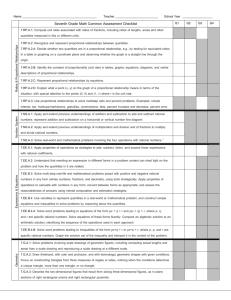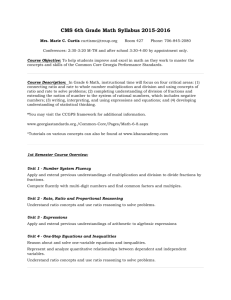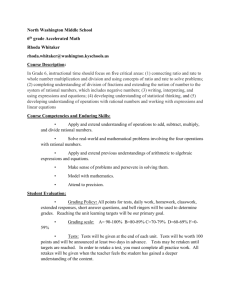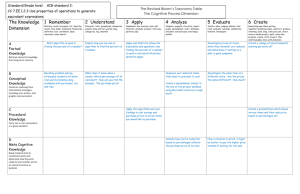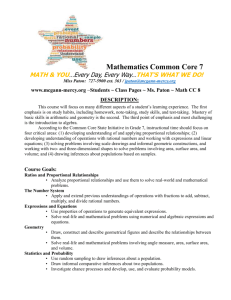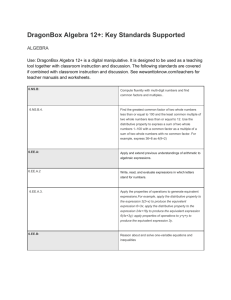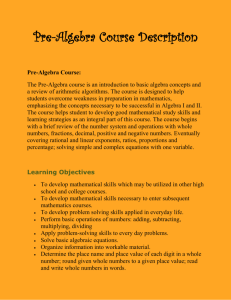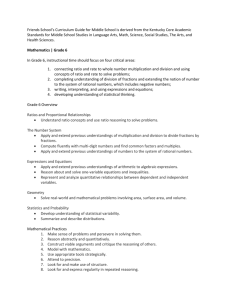Curriculum Course Outline
advertisement
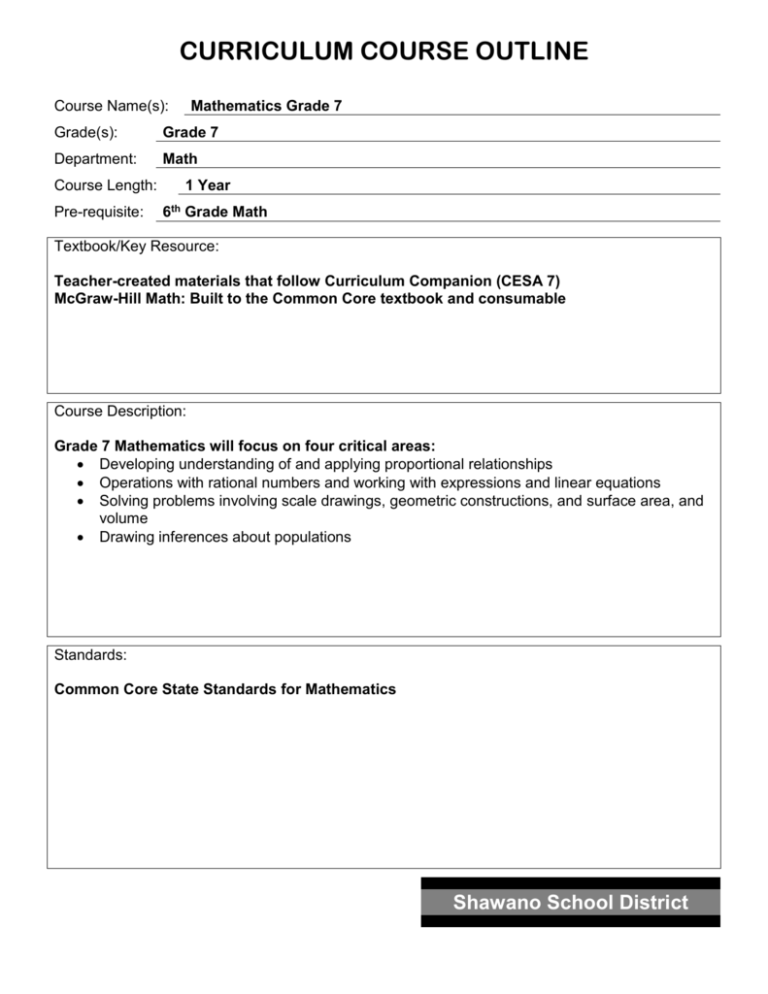
CURRICULUM COURSE OUTLINE Course Name(s): Mathematics Grade 7 Grade(s): Grade 7 Department: Math Course Length: Pre-requisite: 1 Year 6th Grade Math Textbook/Key Resource: Teacher-created materials that follow Curriculum Companion (CESA 7) McGraw-Hill Math: Built to the Common Core textbook and consumable Course Description: Grade 7 Mathematics will focus on four critical areas: Developing understanding of and applying proportional relationships Operations with rational numbers and working with expressions and linear equations Solving problems involving scale drawings, geometric constructions, and surface area, and volume Drawing inferences about populations Standards: Common Core State Standards for Mathematics Shawano School District Unit: Ratios and Proportional Relationships Unit Length: 6 weeks Students will know: Students will be able to: 1) Compute unit rates associated with ratios of fractions in context 2) Represent and solve proportional relationships including scale drawings How to show that two objects are proportional How to analyze proportional relationships and use them to solve real world and mathematical problems How percent can help in situations involving money How to integrate aspects of The Number System and Expressions and Equations Standard(s): 7.RP.1; 7.RP.2; 7.RP.3; 7.NS.3; 7.EE.2; 7.EE.3 Unit: The Number System Unit Length: 6 weeks Students will know: Students will be able to: 1) Understand addition and subtraction with positive and negative rational numbers and solve problems in contextual situations 2) Understand multiplication and division with positive and negative rational numbers and solve problems in contextual situations 3) Convert rational numbers to decimal form and solve problems in contextual situations What happens when you add, subtract, multiply, and divide integers and fractions How to apply and extend previous understandings of operations with fractions to add, subtract, multiply, and divide rational numbers Standard(s): 7.NS.1; 7.NS.2; 7.NS.3; 7.EE.3; 7.RP.3 Unit: Expressions and Equations Unit Length: 6 weeks Students will know: Students will be able to: How numbers and symbols can be used to represent mathematical ideas What it means to say two quantities are equal How to use properties of operations to generate equivalent expressions How to solve real life and mathematical 1) Use properties of operations to generate equivalent expressions 2) Develop an understanding of the relationship between the circumference and area of a circle 3) Create and solve problems that involve expressions, equations, and inequalities including situations that involve a problems using numerical and algebraic expressions and equations geometric context Standard(s): 7.EE.1; 7.EE.2; 7.EE.3; 7.EE.4; 7.NS.3 Shawano School District Unit: Geometry Unit Length: 6 weeks Students will know: Students will be able to: 1) Construct geometric shapes with given How geometry and measurements conditions helps describe real world objects 2) Slice prisms and pyramids and describe How to draw, construct, and describe the resulting figures geometrical figures and describe the 3) Write and solve equations involving relationships between them angles How to solve real life and mathematical problems involving angle measure, area, surface area, and volume Standard(s): 7.G.1; 7.G.2; 7.G.3; 7.G.4; 7.G.5; 7.G.6 Unit: Probability and Statistics Unit Length: 12 weeks Students will know: Students will be able to: How to predict the outcome of future events How to know which type of graph to use when displaying data How to investigate chance processes and develop, use, and evaluate probability models To use random sampling to draw inferences about a population How to draw informal comparative inferences about two populations 1) Understand the ranges of probability and likelihood as well as approximate probability based on data 2) Develop and evaluate probability models 3) Understand and apply various methods to find the probabilities of compound events 4) Understand random sampling and use it to draw inferences about a population 5) Draw informal comparative inferences about two populations using measures of center and variability Standard(s): 7.SP.1; 7.SP.2; 7.SP.4; 7.SP.5; 7.SP.7; 7.SP.8


